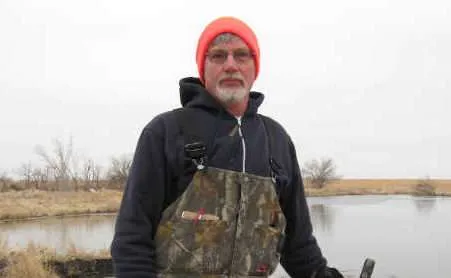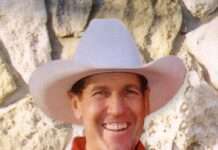Turkey vultures serve as Nature’s cleanup crew, so they get a bad rap on several fronts. But if you can get past how they look and what they eat, they really are amazing birds. Some years back, Joyce and I found that an old ramshackle shed in the middle of a wheat field, owned by a farmer at church, had been a vulture nursery for many years, and decided to see if we could watch the process of raising young turkey vultures first hand.
The old shed sat ¼ mile into a wheat field near a clump of trees surrounding an old windmill. A shelterbelt of overgrown cedars separated it from the field on one side. In one corner of this shed was a granary; the kind our granddads used with boards that slid into slots in the door frame to hold loose grain that was hand-shoveled off a wagon. One corner of this 4 x 6-foot granary had been the birthplace of numerous baby Turkey Vultures over the years.
On our first trip we cautiously entered the creaky old building, all the while scanning the rafters and dark corners around us, hoping not to be surprised by “mom” vulture or the bobcat the owner had chased from the shed that winter. We clamored over piles of old lumber and peered into the granary to find 2 solitary eggs lying on the floor in the front corner amidst several years’ worth of dirt and filth. Talk about a humble beginning!
The following week we again picked our way over the lumber to peer into the granary, and there sat mom on the nest. She sat perfectly still and showed no signs of fear, or of moving for that matter. To see under her, I literally had to pry her up in the air with an old board. Can you imagine standing 2 feet away from a wild adult turkey vulture? The 2 eggs still lay beneath her. Our next couple of weekly visits found mom absent but the eggs still intact.
The next time we checked in, we began hearing hissing sounds from the “nursery,” and as we stuck our heads around the corner, we were greeted by 2 hissing white balls of fuzz with black heads that were much too big for the rest of their bodies. They locked their stubby little featherless wings together, one facing forward and the other facing backwards, lowered their heads in a sort of defensive posture, and hissed like banshees! Subsequent visits were all met with the same greetings, but those white balls of fuzz got a little bigger each time. Black splotches began appearing here and there over their bodies as feathers slowly replaced the fuzz. I erected one of our hunting blinds nearby in an effort to observe the adults coming and going as they fed and cared for their chicks. I tried all times of the day but never succeeded, yet the chicks still grew and actually took on the form of turkey vultures.
On the next visit, as we silently approached the old shed, we were startled by 2 huge forms swooping out the side of the building in front of us. Figuring we had just missed our chance to see the adult birds interacting with the chicks, we walked on inside to find the nest empty. Back outside, a glance around found one immature vulture sitting on the windmill and the other in the shelterbelt. It had been the 2 chicks that swooped from the shed at our approach! They were fully grown and fully feathered but still lacked the unsightly red head that gives them the name Turkey Vulture.
A couple days later I made one last trip, trying to catch the youngsters on the ground and in the building to see what kind of response I’d get. I parked along the road and hiked the ¼ mile across the field attempting to sneak up on them. Numerous times when we had looked in on the growing chicks, not a vulture would be visible in the air as far as our eyes could see…until we exited the shed. Then from out of nowhere one or more would suddenly be circling above us. I still remember sneaking in that one last time and finding no vultures were around, but when I left the shed, both youngsters sat watching me from an old dead snag in the shelterbelt.
I wish we had been able to watch the young vultures learn to fly. How does that work anyway? You don’t just push a baby Turkey Vulture from the nest and hope they get it right before they hit the ground. They’re already on the ground! Turkey Vultures; God’s cleanup crew, with a face only a mother could love! Continue to Explore Kansas Outdoors!
Steve can be contacted by email at [email protected].




